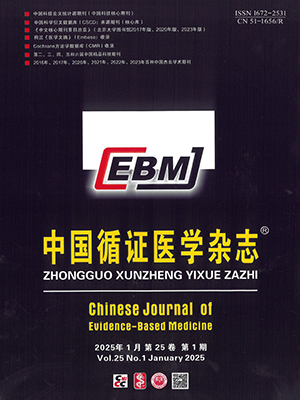| 1. |
Epstein L, Hunter JC, Arwady MA, et al. New Delhi metallo-β-lactamase-producing carbapenem-resistant Escherichia coli associated with exposure to duodenoscopes. JAMA, 2014, 312(14): 1447-1455.
|
| 2. |
Robertson P, Smith A, Anderson M, et al. Transmission of Salmonella enteritidis after endoscopic retrograde cholangiopancreatography because of inadequate endoscope decontamination. Am J Infect Control, 2017, 45(4): 440-442.
|
| 3. |
Kovaleva J. Infectious complications in gastrointestinal endoscopy and their prevention. Best Pract Res Clin Gastroenterol, 2016, 30(5): 689-704.
|
| 4. |
Ofstead CL, Heymann OL, Quick MR, et al. Residual moisture and waterborne pathogens inside flexible endoscopes: evidence from a multisite study of endoscope drying effectiveness. Am J Infect Control, 2018, 46(6): 689-696.
|
| 5. |
刘卫平, 何欢, 杨永芳, 等. 内蒙古自治区24家医院软式内镜生物膜现状研究. 中国消毒学杂志, 2020, 37(7): 502-504.
|
| 6. |
付喜梅, 俞秋华, 刘莉莉, 等. 四川省部分医院软式内镜清洗消毒现状调查及效果监测. 预防医学情报杂志, 2021, 37(8): 1100-1104.
|
| 7. |
孔懿, 林泓怡, 黄英, 等. 南京市35家医疗机构的软式内镜清洗消毒现状调查. 中国消毒学杂志, 2021, 38(7): 518-521.
|
| 8. |
张晓玲, 雷毅, 陈宝宝, 等. 陕西省属医院软式内镜消毒现状及影响因素分析. 中国消毒学杂志, 2021, 38(4): 275-278.
|
| 9. |
Day LW, Muthusamy VR, Collins J, et al. Multisociety guideline on reprocessing flexible GI endoscopes and accessories. Gastrointest Endosc, 2021, 93(1): 11-33.
|
| 10. |
鞠春晓, 张瑶, 刘晓林, 等. 慢性心力衰竭防治指南和共识的方法学质量评价. 中国循证医学杂志, 2021, 21(9): 1091-1097.
|
| 11. |
ASGE Quality Assurance in Endoscopy Committee, Calderwood AH, Day LW, et al. ASGE guideline for infection control during GI endoscopy. Gastrointest Endosc, 2018, 87(5): 1167-1179.
|
| 12. |
李晔, 胡国庆. 临床使用软式内镜生物膜污染研究进展. 中国消毒学杂志, 2021, 38(7): 542-545.
|
| 13. |
徐东平, 潘勤勤, 肖玲. 软式内镜消毒灭菌方法进展. 中华医院感染学杂志, 2021, 31(6): 957-960.
|
| 14. |
McCafferty CE, Aghajani MJ, Abi-Hanna D, et al. An update on gastrointestinal endoscopy-associated infections and their contributing factors. Ann Clin Microbiol Antimicrob, 2018, 17(1): 36.
|
| 15. |
Alfa MJ, Singh H. Impact of wet storage and other factors on biofilm formation and contamination of patient-ready endoscopes: a narrative review. Gastrointest Endosc, 2020, 91(2): 236-247.
|
| 16. |
Alfa MJ, Ribeiro MM, da Costa Luciano C, et al. A novel polytetrafluoroethylene-channel model, which simulates low levels of culturable bacteria in buildup biofilm after repeated endoscope reprocessing. Gastrointest Endosc, 2017, 86(3): 442-451.
|
| 17. |
ASGE Technology Committee, Parsi MA, Sullivan SA, et al. Automated endoscope reprocessors. Gastrointest Endosc, 2016, 84(6): 885-892.
|
| 18. |
Smith ZL, Oh YS, Saeian K, et al. Transmission of carbapenem-resistant Enterobacteriaceae during ERCP: time to revisit the current reprocessing guidelines. Gastrointest Endosc, 2015, 81(4): 1041-1045.
|
| 19. |
Wendorf KA, Kay M, Baliga C, et al. Endoscopic retrograde cholangiopancreatography-associated AmpC Escherichia coli outbreak. Infect Control Hosp Epidemiol, 2015, 36(6): 634-642.
|
| 20. |
Marsh JW, Krauland MG, Nelson JS, et al. Genomic epidemiology of an endoscope-associated outbreak of klebsiella pneumoniae carbapenemase (KPC)-producing K. pneumoniae. PLoS One, 2015, 10(12): e0144310.
|
| 21. |
Thaker AM, Muthusamy VR, Sedarat A, et al. Duodenoscope reprocessing practice patterns in U. S. endoscopy centers:a survey study. Gastrointest Endosc, 2018, 88(2): 316-322.
|
| 22. |
Snyder GM, Wright SB, Smithey A, et al. Randomized comparison of 3 high-level disinfection and sterilization procedures for duodenoscopes. Gastroenterology, 2017, 153(4): 1018-1025.
|
| 23. |
Bartles RL, Leggett JE, Hove S, et al. A randomized trial of single versus double high-level disinfection of duodenoscopes and linear echoendoscopes using standard automated reprocessing. Gastrointest Endosc, 2018, 88(2): 306-313.
|
| 24. |
Muscarella LF. Use of ethylene-oxide gas sterilisation to terminate multidrug-resistant bacterial outbreaks linked to duodenoscopes. BMJ Open Gastroenterol, 2019, 6(1): e000282.
|
| 25. |
Kovaleva J. Endoscope drying and its pitfalls. J Hosp Infect, 2017, 97(4): 319-328.
|
| 26. |
Barakat MT, Huang RJ, Banerjee S. Comparison of automated and manual drying in the elimination of residual endoscope working channel fluid after reprocessing (with video). Gastrointest Endosc, 2019, 89(1): 124-132.
|
| 27. |
Perumpail RB, Marya NB, McGinty BL, et al. Endoscope reprocessing: Comparison of drying effectiveness and microbial levels with an automated drying and storage cabinet with forced filtered air and a standard storage cabinet. Am J Infect Control, 2019, 47(9): 1083-1089.
|
| 28. |
Allen JI, Allen MO, Olson MM, et al. Pseudomonas infection of the biliary system resulting from use of a contaminated endoscope. Gastroenterology, 1987, 92(3): 759-763.
|
| 29. |
Brock AS, Steed LL, Freeman J, et al. Endoscope storage time: assessment of microbial colonization up to 21 days after reprocessing. Gastrointest Endosc, 2015, 81(5): 1150-1154.
|
| 30. |
Scanlon P, Flaherty K, Reilly EA, et al. Association between storage interval and contamination of reprocessed flexible endoscopes in a pediatric gastrointestinal procedural unit. Infect Control Hosp Epidemiol, 2017, 38(2): 131-135.
|
| 31. |
Sethi S, Huang RJ, Barakat MT, et al. Adenosine triphosphate bioluminescence for bacteriologic surveillance and reprocessing strategies for minimizing risk of infection transmission by duodenoscopes. Gastrointest Endosc, 2017, 85(6): 1180-1187.
|
| 32. |
Quan E, Mahmood R, Naik A, et al. Use of adenosine triphosphate to audit reprocessing of flexible endoscopes with an elevator mechanism. Am J Infect Control, 2018, 46(11): 1272-1277.
|




